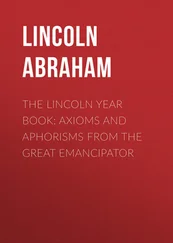
Although Wallis did not give a complete proof the validity of this method, Fermat nevertheless admitted that he had coped with the task. Euler came very close to the solution when he showed that this fraction is cyclical, but he was not able to complete the proof and this task was finally solved by Lagrange. Later, this Fermat's task also was solved by Gauss in his own way, but for this purpose the extensive theory he created called “Arithmetic of deductions” was involved. And everything would be fine if the Lagrange's proof was not in the category of highest difficulty and the Gauss decision was not based on the most complicated theory. Fermat himself clearly could not follow such ways. About how he himself solved this problem, he reports in the letter-testament to Carcavy in August 1659 [36]: “I recognize that Mr. Frenicle gave various special solutions to this question as well as Mr. Wallis, but a common solution will be found using the method of descent applied skillfully and appropriately." However, this Fermat's solutions so remained as the secret behind seven seals!
Pic. 38. Page 64 Commercium Epistolicum
Demonstrating Wallis Method
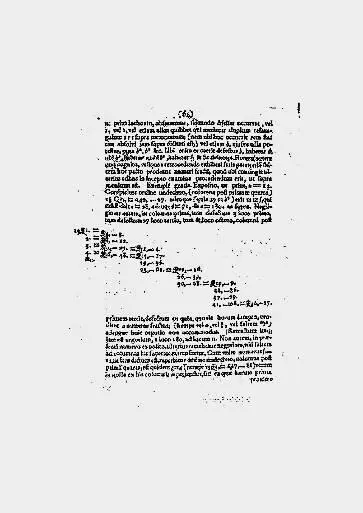
We will try here slightly to open the veil over this mystery. To do this, we will look at a simple example of Wallis calculations and then compare it with how one could do these calculations using Fermat's method. So, we need to find the smallest numbers x and y that satisfy the equation Ax 2+ 1 = y 2. Let A = 29 then calculations by the Wallis method look as follows [32]:
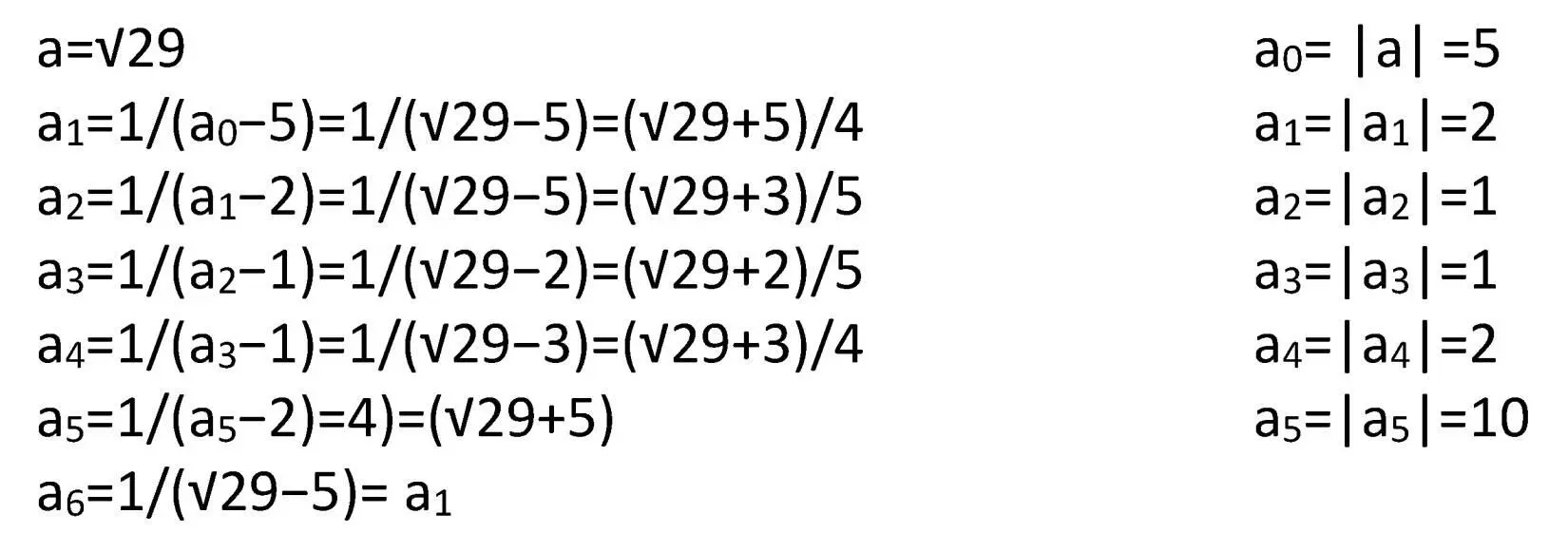
From this sequence of calculations, a chain of suitable fractions is obtained by backward i.e. from a5 to a0 and looks like: 5/1; 11/2; 16/3; 27/5. As a result, we get 70/13. Then the minimum solution would be:
x 1√29+у 1=(13√29+70) 2=1820√29+9801; x 1=1820; y 1=9820
Wallis was unable to prove that this method of computation gives solutions for any non-square number A. However, he guessed that the chain of computations ends where a6 will be computed by the same formula as a1. To understand the meaning of this chain of calculations, you need to study a very voluminous and extremely difficult theory [7, 14, 19, 23, 26, 32], which Fermat could not have developed at that time. Since no Fermat's manuscripts on arithmetic have survived, a natural question arises: how could he formulate such a difficult problem, about which there was very little information before him?
For today's science such a question is clearly beyond its capabilities since for it the pinnacle of achievements in solving Fermat's problems is any result even inflated to such incredible dimensions that we have today. However, it is difficult to imagine how much this our respected science will be dejected when from this book it learns that the problem was solved by Fermat not for great scientists, but … for schoolchildren!!! However, here we cannot afford to grieve science so much, so we only note that the example given in the textbooks is very unfortunate since it can be solved quite simply, namely: x = 2mz, where m2−1 = z 2. This last equation differs from the initial one only in sign and even by the method of ordinary tests without resorting to irrational numbers one can easily find the solution m = 13; z = 70; x = 2 x 13 x 70 = 1820; y = 9820.
Obviously, in textbooks it would be much more appropriate to demonstrate an example with the number 61 i.e. the smallest number proposed by Fermat himself. How he himself solved this problem is unknown to science, but we have already repeatedly demonstrated that it is not a problem for us to find out. We just need to look once more into the cache of the Toulousean senator and as soon as we succeeded, we quickly found the right example so that it could be compared with the Wallis method. In this example you can calculate x = 2mz, where m and z are solutions to the corresponding equation 61m 2– z 2= 1. Then the chain of calculations is obtained as follows:
61m 2−z 2=1
m=(8m 1±z 1)/3=(8×722+5639)/3=3805; z 2=61×3805 2−1=29718 2
61m 1 2−z 1 2=3
m=(8m 1±z 1)/3=(8×722+5639)/3=3805; z 1 2=61×722 2−1=29718 2
61m 2 2−z 2 2=9
m=(8m 1±z 1)/3=(8×722+5639)/3=3805; z 2 2=61×137 2−1=29718 2
61m 3 2−z 3 2=27
m 3=(8m 4±z 4)/3=(8×5+38)/3=26; z 3 2=61×26 2−27=203 2
61m 4 2−z 4 2=81
m 4=(8m 5±z 5)/3=(8×2−1)/3=5; z 4 2=61×5 2−81=38 2
61m 5 2−z 5 2=243
m 5=2; z 5 2=1
We will not reveal all nuances of this method, otherwise all interest to this problem would have been lost. We only note that in comparison with Wallis method where the descent method is not used, here it is present in an explicit form. This is expressed in the fact that if the numbers m and z satisfying the equation 61m 2–z 2=1 exist, then there must still exist numbers m 111 2–z 1 2=3, as well as the numbers m 21and z 21, from equation 61m 2 2–z 2 2=9, etc. up to the minimum values m 54and z 54. The number 3 appearing in the descent is calculated as 64 – 61, that is, as the difference between 61 and the square closest to it. Calculations as well as in the Wallis method are carried out in the reverse order i.e. only after the minimum values of m 5and z 5have been calculated. As a result, we get:
m=3805; z=29718
x=2mz=2×3805×29718=226153980
y=√(61×2261539802+1)=1766319049
Of course, connoisseurs of the current theory will quickly notice in this example that the results of calculations obtained in it will exactly coincide with those that can be obtained by the Wallis' method. However, for this they will have to use the irrational number √61, and our example with Fermat's method showed that it is possible to do calculations exclusively in the framework of arithmetic i.e. only in natural numbers. There is no doubt also that experts without much effort will guess how to get the formulas shown in our example. However, it will not be easily for them to explain how to apply this Fermat's method in the general case because from our example it is not at all clear how it is possible to determine that the ultimate goal is to solve the equation 61m 5 2– z 5 2= 243 from which calculations should be performed with a countdown.
It would be simply excellent if today's science could explain Fermat's method in every detail, but even the ghostly hopes for this are not yet visible. It would be more realistic to expect that attempts will be made to refute this example as demonstration a method of solving the problem unknown to science. Nevertheless, science will have to reckon with the fact that this example is still the only one in history (!!!) confirmation of what Fermat said in his letter-testament. When this secret is fully revealed, then all skeptics will be put to shame and they will have no choice, but to recognize Fermat as greater than all the other greatest scientists because they were recognized as such mainly because they created theories so difficult for normal people to understand that they could only cause immense horror among students who now have to take the rap for such a science. 43
https://www.youtube.com/watch?v=wFz8W2HsjfQ
https://www.youtube.com/watch?v=cUytn2SZ1n4
Читать дальше
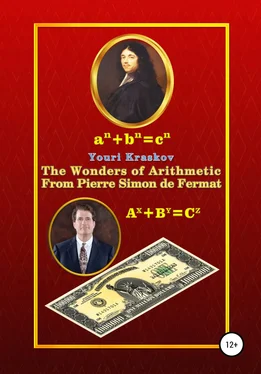






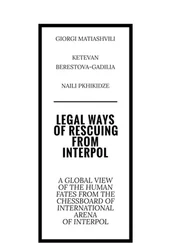
![Theresa Cheung - The Dream Dictionary from A to Z [Revised edition] - The Ultimate A–Z to Interpret the Secrets of Your Dreams](/books/692092/theresa-cheung-the-dream-dictionary-from-a-to-z-r-thumb.webp)






